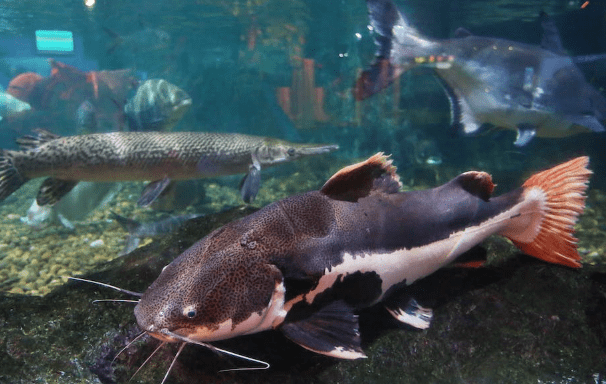Step By Step Starting Catfish Farming Business In Nigeria

Nigerians like to eat catfish at least once a week. No wonder the catfish business is growing in this country. You can start catfish farming too, whenever you get the proper budget. If you are interested in running the business, you can read our explanation until we are done about the catfish.
1. Learn Basic Knowledge about catfish
Before you create a brand and budget plan, you should learn about the catfish. The knowledge allows you to care for catfish according to their habitat so that they can reproduce properly. Caring for these animals also does not require a lot of space. You can just use any space to make a catfish pond. The catfish has juicy meat that is suitable for frying and grilling. The maintenance process is also quite easy because you don’t need to circulate and clean the pool too often. Basically, these animals want to consume any type of food. You can also feed them leftovers.
2. Understand the Phases of Catfish Production
The next step that you should understand about catfish farming is the life cycle, or production phases. The whole phases are hatchery, fungerling, table-size production, grow-out cycle, broodstock, and processing the catfish. The details of each phase can be seen below.
Hatchery: At this stage, the catfish egg will be hatched by combining the egg and sperm. The sperm comes from broodstock. If the phase is successful, you can see fries (baby catfish) appear.
Fingerling: Fries need to be cared for, and the maintenance process is also quite easy. You only have to feed it regularly so that the catfish can grow. The fingerling phase takes around 6 weeks.
Table Size Production: You need to continue caring for the catfish so that it has a weight range of around 400 grams to 700 grams.
Grow-out Phase: The next phase is the grow-out phase, which takes care of the catfish until it reaches 1 kg in weight. You will see larger catfish in this phase.
Broodstock: You should take care of certain catfish for broodstock. Anyway, the parent stock is important for the next hatchery. You can take care of the parent stock until it has aged more than one year.
Process the Catfish: The rest of the phase is to process the catfish so that it is suitable for human consumption. There will be additional value in this phase so that consumers want to eat it.
3. Budgeting for Pond Setup
You should learn about budgeting to make a pond too. There are many types of catfish ponds, such as plastic, tarpaulin, concrete, and earthen ponds. Each pond has its own characteristics, so you should choose based on the production phase. Anyway, you may not be able to hatch the egg by using the earthen pond. The earthen pond is suitable for the growth phase. You should learn more about the pond before running the business.
4. Choose the Types of Catfish Feed
There are three types of feeding methods for catfish. The three types are floating, sinking, and supplementary feeds. The floating feed is suitable when the farmer wants to monitor the response of the catfish eating the food. The sinking feed is easier to dissolve than the floating feed. The latter is a supplementary feed that can boost catfish nutrition.
You already understand at a glance how to run catfish farming. You can follow those steps and find potential customers. You can also collaborate with the restaurant to increase profits.


